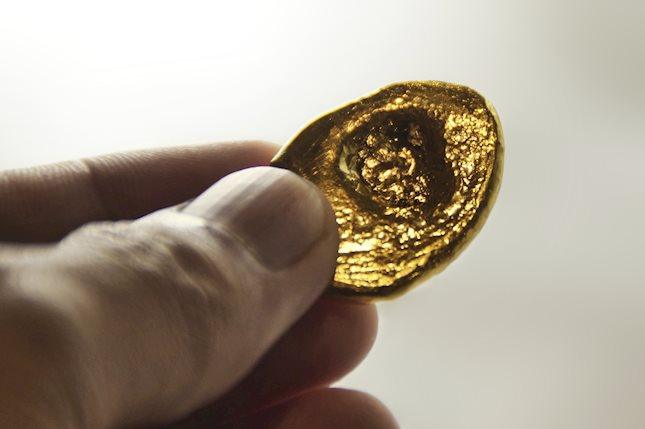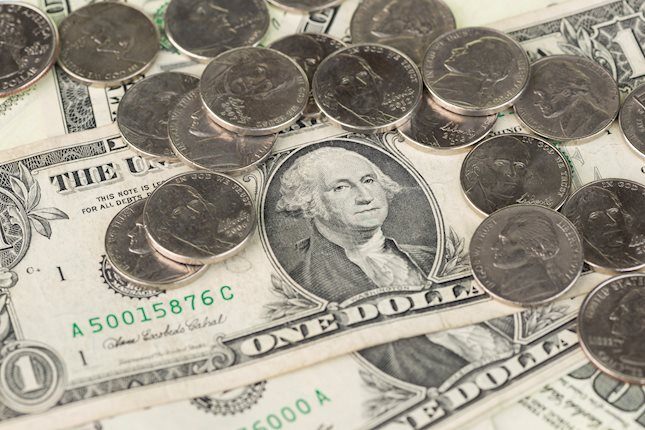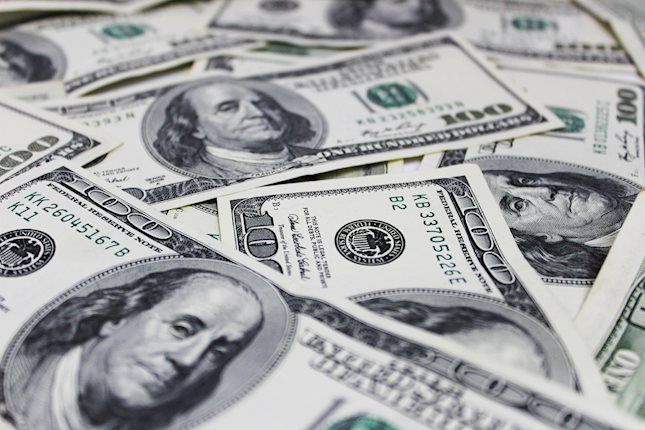Breaking: US core PCE inflation holds steady at 2.7% in September vs. 2.6% expected
Inflation in the US, as measured by the change in the Personal Consumption Expenditures (PCE) Price Index, edged lower to 2.1% on a yearly basis in September from 2.2% in August, the US Bureau of Economic Analysis (BEA) reported on Thursday. This reading came in line with the market expectation. On a monthly basis, the PCE Price Index rose 0.2%, as forecast.
The core PCE Price Index, which excludes volatile food and energy prices, increased 2.7% in the same period, matching August's rise and coming in above the market forecast of 2.6%. The core PCE Price Index rose 0.3% on a monthly basis, as anticipated.
Market reaction to PCE inflation data
The US Dollar stays under modest bearish pressure following the PCE inflation figures. At the time of press, the US Dollar Index was down 0.2% on the day at 103.88.
US Dollar PRICE Today
The table below shows the percentage change of US Dollar (USD) against listed major currencies today. US Dollar was the weakest against the Japanese Yen.
| USD | EUR | GBP | JPY | CAD | AUD | NZD | CHF | |
|---|---|---|---|---|---|---|---|---|
| USD | -0.23% | -0.14% | -0.52% | 0.08% | 0.00% | -0.00% | -0.20% | |
| EUR | 0.23% | 0.10% | -0.27% | 0.31% | 0.24% | 0.22% | 0.03% | |
| GBP | 0.14% | -0.10% | -0.36% | 0.21% | 0.14% | 0.12% | -0.06% | |
| JPY | 0.52% | 0.27% | 0.36% | 0.53% | 0.49% | 0.41% | 0.26% | |
| CAD | -0.08% | -0.31% | -0.21% | -0.53% | -0.06% | -0.10% | -0.27% | |
| AUD | -0.00% | -0.24% | -0.14% | -0.49% | 0.06% | -0.03% | -0.23% | |
| NZD | 0.00% | -0.22% | -0.12% | -0.41% | 0.10% | 0.03% | -0.18% | |
| CHF | 0.20% | -0.03% | 0.06% | -0.26% | 0.27% | 0.23% | 0.18% |
The heat map shows percentage changes of major currencies against each other. The base currency is picked from the left column, while the quote currency is picked from the top row. For example, if you pick the US Dollar from the left column and move along the horizontal line to the Japanese Yen, the percentage change displayed in the box will represent USD (base)/JPY (quote).
This section below was published as a preview of the US PCE inflation data at 10:15 GMT.
- The core Personal Consumption Expenditures Price Index is expected to rise 0.3% MoM and 2.6% YoY in September.
- Markets expect the Fed to lower the policy rate by 25 basis points at the next policy meeting.
- Already released quarterly PCE inflation data could diminish the impact of the monthly prints.
The United States Bureau of Economic Analysis (BEA) is set to release the Personal Consumption Expenditures (PCE) Price Index data for September, which is the Federal Reserve’s preferred measure of inflation, at 12:30 GMT.
Although PCE inflation data is usually seen as a big market-mover, this time its impact could be limited due to the fact that quarterly PCE inflation figures were already released within the Gross Domestic Product (GDP) report on Wednesday.
Anticipating the PCE: Insights into the Federal Reserve's key inflation metric
The core PCE Price Index, which excludes volatile food and energy prices, is projected to rise 0.3% in August on month, at a stronger pace than the 0.1% increase recorded in August. Over the last twelve months, the core PCE inflation is expected to edge lower to 2.6% from 2.7%. Meanwhile, the headline annual PCE inflation is seen retreating to 2.1% from 2.2% in the same period.
On Wednesday, the BEA reported that the PCE Price Index and the core PCE Price Index rose 1.5% and 2.2%, respectively, on a quarterly basis in the third quarter.
Previewing the PCE inflation report, “core PCE is projected to rise 0.3% m/m and print at 2.6% y/y vs. 2.7% in August,” BBH analysts expect, adding that“risks are skewed to the upside because CPI inflation in September ran hot.”
The CME Group FedWatch Tool shows that markets have already fully priced in a 25 basis points (bps) rate cut in November. At the last policy meeting of the year, the probability of another 25 bps rate reduction stands at around 70%, against a 30% chance of a no change in the policy rate. The PCE Price Index figures are unlikely to alter these odds in a noticeable way.
How will the Personal Consumption Expenditures Price Index affect EUR/USD?
Eren Sengezer, European Session Lead Analyst at FXStreet, shares a brief technical outlook for EUR/USD:
“The Relative Strength Index (RSI) indicator on the daily chart remains below 50 even though EUR/USD closed the previous three days modestly higher, highlighting a lack of bullish momentum.”
“On the upside, the 200-day Simple Moving Average (SMA) aligns as a pivot level at 1.0870. In case EUR/USD rises above this level and starts using it as support, technical buyers could take action. In this scenario, 1.0940 (100-day SMA) could be seen as next resistance before 1.1000-1.1010 (round level, 50-day SMA). On the downside, 1.0800 (round level) aligns as first support ahead of 1.0670 (static level from June).”
Inflation FAQs
Inflation measures the rise in the price of a representative basket of goods and services. Headline inflation is usually expressed as a percentage change on a month-on-month (MoM) and year-on-year (YoY) basis. Core inflation excludes more volatile elements such as food and fuel which can fluctuate because of geopolitical and seasonal factors. Core inflation is the figure economists focus on and is the level targeted by central banks, which are mandated to keep inflation at a manageable level, usually around 2%.
The Consumer Price Index (CPI) measures the change in prices of a basket of goods and services over a period of time. It is usually expressed as a percentage change on a month-on-month (MoM) and year-on-year (YoY) basis. Core CPI is the figure targeted by central banks as it excludes volatile food and fuel inputs. When Core CPI rises above 2% it usually results in higher interest rates and vice versa when it falls below 2%. Since higher interest rates are positive for a currency, higher inflation usually results in a stronger currency. The opposite is true when inflation falls.
Although it may seem counter-intuitive, high inflation in a country pushes up the value of its currency and vice versa for lower inflation. This is because the central bank will normally raise interest rates to combat the higher inflation, which attract more global capital inflows from investors looking for a lucrative place to park their money.
Formerly, Gold was the asset investors turned to in times of high inflation because it preserved its value, and whilst investors will often still buy Gold for its safe-haven properties in times of extreme market turmoil, this is not the case most of the time. This is because when inflation is high, central banks will put up interest rates to combat it. Higher interest rates are negative for Gold because they increase the opportunity-cost of holding Gold vis-a-vis an interest-bearing asset or placing the money in a cash deposit account. On the flipside, lower inflation tends to be positive for Gold as it brings interest rates down, making the bright metal a more viable investment alternative.
Forex News
Keep up with the financial markets, know what's happening and what is affecting the markets with our latest market updates. Analyze market movers, trends and build your trading strategies accordingly.















